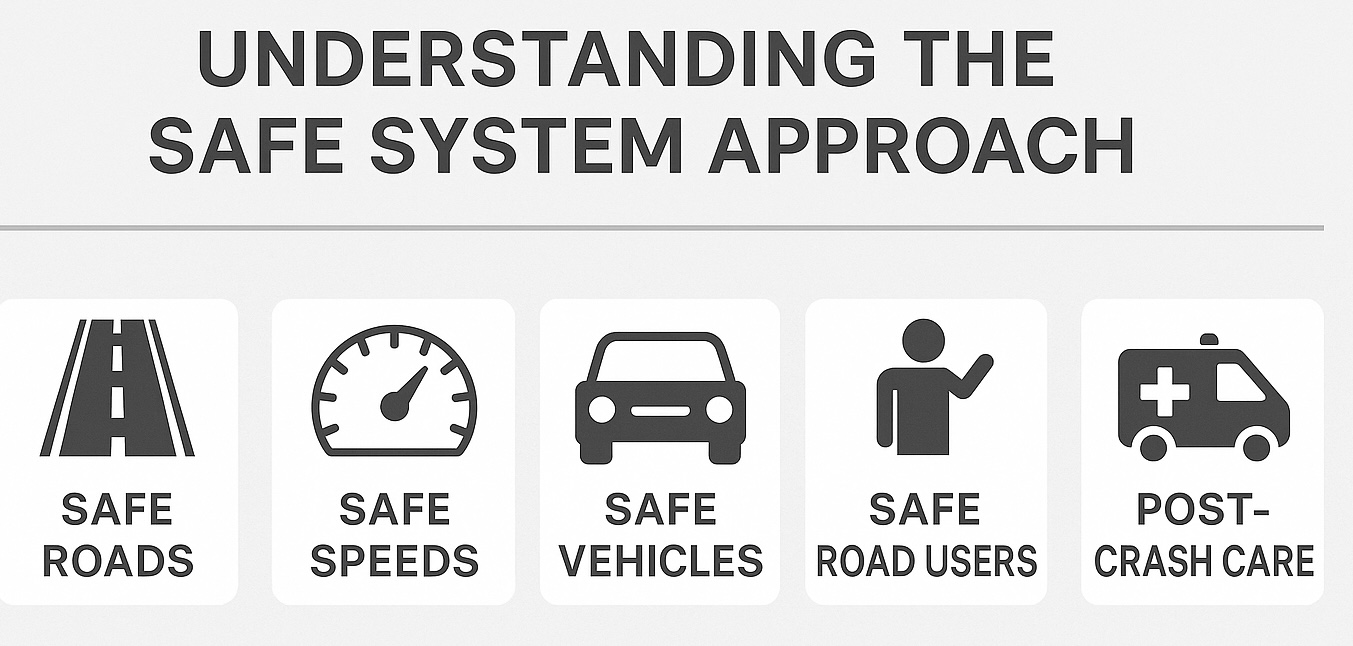
ADIs are part of a bigger system, but we don’t always recognise it – only its failings. Here is an introduction to The Safer Systems Approach, bring all the elements together in support of each other – including us.
Simple Explanation
The Safe System Approach is a smarter way to think about road safety. Instead of blaming people when things go wrong, it designs roads, vehicles, rules, and responses so that:
- Mistakes don’t kill.
- People aren’t badly hurt : even when they get things wrong.
- Everyone : drivers, planners, governments, communities, all share the job.
Why Does It Matter?
- To err is human; that’s normal. We don’t expect perfection. Instead, the system assumes we’ll make mistakes and builds in protection.
- Our bodies are delicate. Even at lower speeds, crashes can be fatal. The system respects physical limits, for example : separating cyclists and pedestrians, or slowing traffic.
- Crash consequences matter. If a crash happens, the system ensures it’s less likely to result in death or serious injury.
- Safety isn’t one person’s job. Planners, engineers, governments, communities, emergency services all play a role, and so do we.
The Pillars
Here are five key areas the Safe System tackles together:
- Safe Roads : Lanes and street layouts that guide behaviour, reduce mistakes, and separate road users.
- Safe Speeds : Limits and designs that keep speeds within what the human body can tolerate, or slow enough that serious harm is unlikely.
- Safe Vehicles : Cars and buses with technology that helps avoid crashes or lessen their impact.
- Safe Road Users : Encouraging responsible behaviours, like not driving while impaired, and educating people about risks.
- Post-Crash Care : Quick and effective emergency response, improved first aid, and preventing follow-on crashes.
The Principles Behind It All
The approach rests on six simple beliefs:
- No one should die or be seriously injured.
- Mistakes happen, let’s plan for that.
- People are fragile, design with that in mind.
- Responsibility is shared.
- Be proactive, not just reactive. Fix safety before crashes happen.
- Redundancy matters. If one safeguard fails, another one catches the mistake.
Why This Works Better Than “Just Educate People”
Education and enforcement, like telling people not to speed or run red lights, still leaves room for error. The Safe System surrounds people with multiple layers of protection.
Picture it like this: if human error is the leak in a system, instead of blaming the pipe, you stack up fail-safes. Slow the flow (speed limits), Reroute it (safer roads), Catch leaks early (vehicle tech), and Clean up quickly (post-crash care).
Lets make sure that Instructors and Driver know…
The Safe System Approach is about redesigning our roads and vehicles, and sharing responsibility, so human mistakes don’t result in death or serious injury. It handles errors, respects our limits, and offers multiple safety layers.
Posted by Chris Bensted
August 16, 2025
